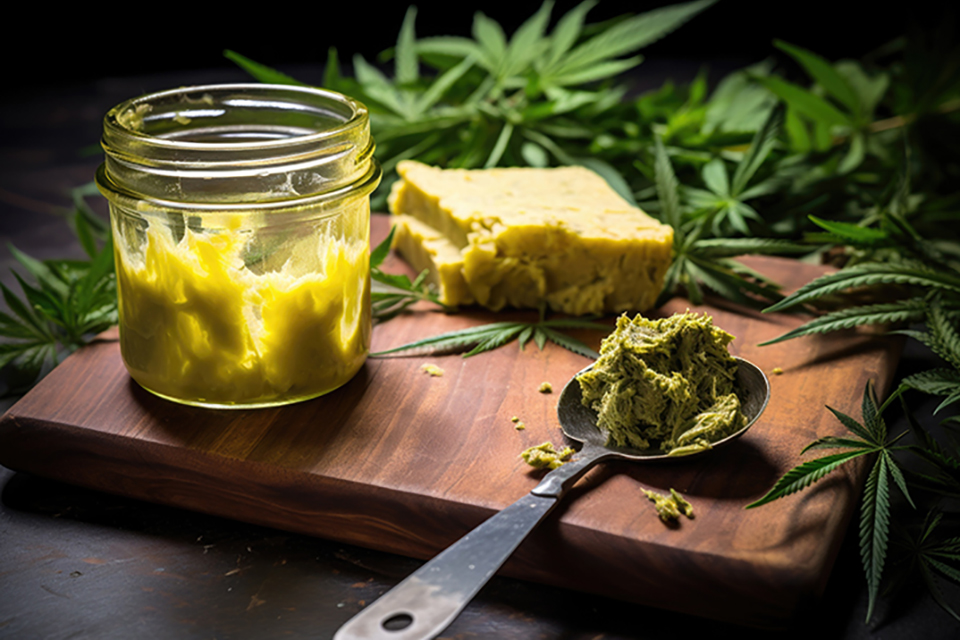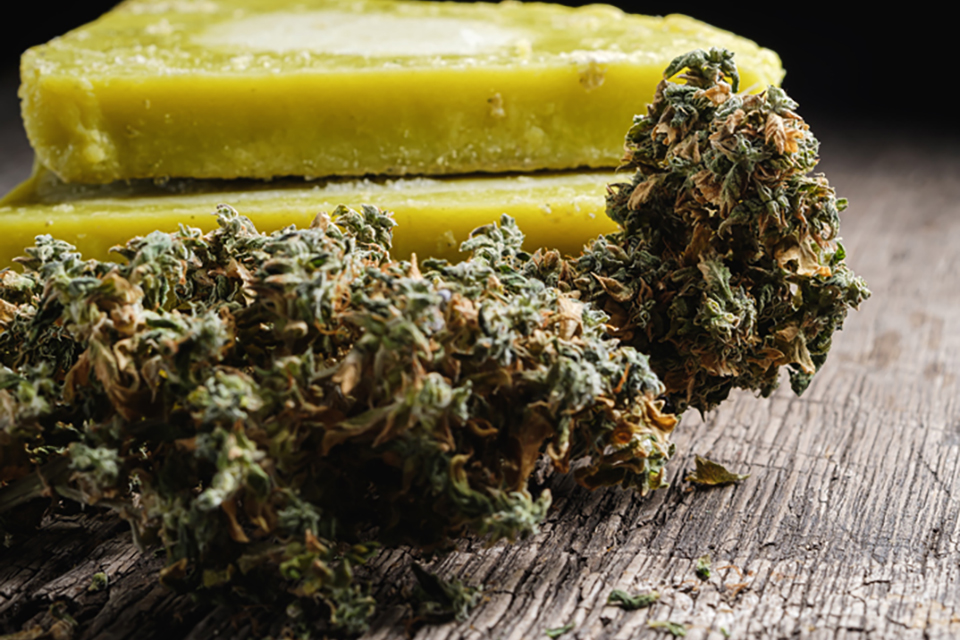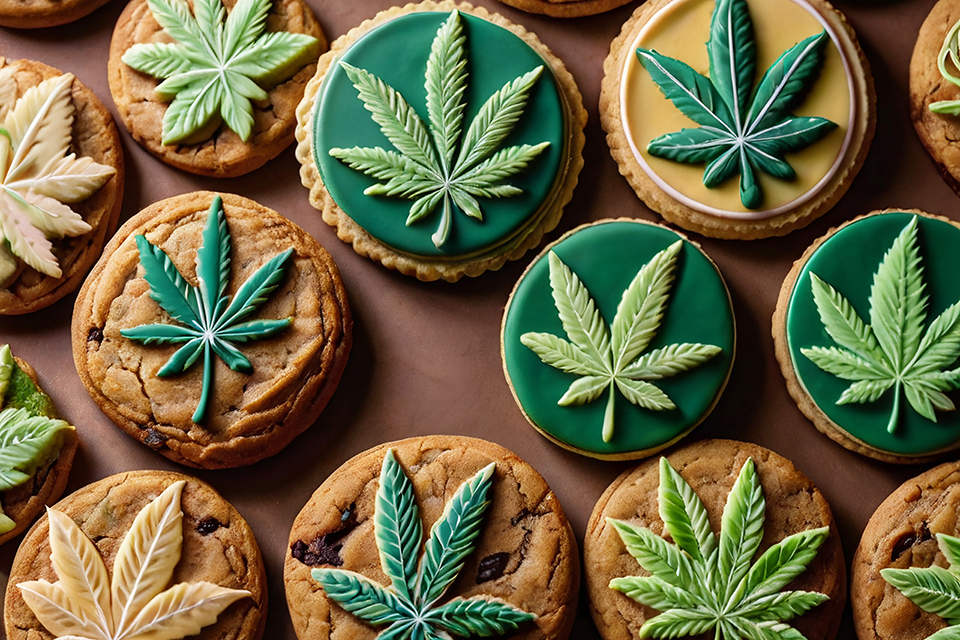
Cannabutter is a staple ingredient for home cooks looking to infuse their dishes with the benefits of cannabis. Those new to the hobby have a tendency to cook up something truly vile, though, as producing high-quality cannabutter can be harder than it looks. Here’s our guide for making the best cannabutter possible at home, with tips for selecting the right cannabis strain to master the decarboxylation process.
Selecting the Best Cannabis Strain for Cannabutter
The starting point in successful cannabutter production at home is choosing the right cannabis strain. The various effects of different strains are largely due to the unique profiles of cannabinoids and terpenes each one possesses. Selecting the appropriate strain can make a significant difference in the final product, impacting everything from taste to potency.
This decision is more than just a matter of personal preference, as the strain you choose plays an integral role in how your cannabutter will turn out and, in turn, influences the effects of any dishes you prepare with it. For example, some strains lean more towards the euphoric and energizing, while others may have a relaxing and calming effect.
Characteristics of Strains Ideal for Cannabutter Production
Generally, strains rich in THC (tetrahydrocannabinol) are a popular choice for cannabutter due to their potency. However, more and more people are exploring the benefits of CBD (cannabidiol) and turning to strains with a higher CBD-to-THC ratio. High CBD strains can give you the medicinal effects of cannabis without the strong psychoactive effects associated with THC.
While it should be obvious, you still need to consider the flavor profile of the cannabis when selecting your strain. Cannabis strains can have earthy, sweet, or fruity notes that can complement or contrast with your intended recipes.
Decarboxylation: The Key to Potent Cannabutter
Decarboxylation is a crucial step in making cannabutter, but many beginners tend to overlook its importance. This scientific process involves heating cannabis to a specific temperature to activate the THC, which otherwise remains dormant. THC, or tetrahydrocannabinol, is the primary psychoactive compound in cannabis, and it’s this compound that gives cannabutter its potent effect. Without doing this process, the cannabis in your butter won’t be doing much of anything, and it especially won’t be getting you high.
Step-By-Step Guide to Decarboxylating Cannabis for Cannabutter
To decarboxylate cannabis, preheat your oven to 240 degrees Fahrenheit. Spread your cannabis evenly in a thin layer on a baking sheet and bake it for approximately 40 minutes or until it’s dry and crumbly. Once decarboxylated, your cannabis is ready to be transformed into cannabutter.
Making Infused Cannabutter
Now that your cannabis is decarboxylated, it’s time to infuse it into butter. Combine your cannabis and butter in a saucepan over low heat and simmer gently for two to three hours, stirring occasionally. This provides ample time for the flavor and active compounds in the cannabis to infuse into the butter. Avoid overheating the mixture, though, or you’ll risk burning the butter and ruining the batch.
Once properly infused, strain the mixture through a cheesecloth, squeezing out as much as possible. Refrigerate the liquid until the butter solidifies, then remove the solid butter from the watery layer beneath.
Tips for Achieving the Best Flavor and Potency
For the best flavor, opt for high-quality unsalted butter. To enhance potency, extend the cooking time to three hours and ensure a consistent, low heat. For the more experienced, you could attempt browning the butter after infusing, adding extra depth to the finished product.
Storing and Using Cannabutter
Store your cannabutter in an airtight container in the fridge or freezer. Use within two weeks if stored in the fridge or within six months if frozen.
You can use your cannabutter for baking, with cookies and cakes being easy options. Savory recipes like pasta sauces and stews are also great options. Remember, cannabutter is a potent ingredient like any edible, so always start small and adjust your dosage as needed. Using too much could render an otherwise delicious dish completely inedible.
Troubleshooting and Tips for Success
Overheating is a common mistake that can lead to a harsh taste and loss of potency. Avoid using the microwave for decarboxylation due to its uneven heating, and remember to simmer gently when infusing the butter.
Additionally, adding a bit of water during the cooking process can help prevent the butter from burning and will improve the final texture of your cannabutter. Butter already has water in it, so the long cooking time will evaporate a good amount of it. Adding back some of that can compensate for the loss.
Create the Most Delicious Cannabutter at Home Today
The best cannabutter production at home starts with selecting the right cannabis strain, properly decarboxylating your cannabis, and infusing it at low heat for the right period of time. It’s not an overly complex process, but a basic level of precision is required in order to avoid common mistakes that would ruin the final product.
Making cannabutter is a craft that takes time to perfect. Don’t be discouraged if your first batch isn’t perfect. Experiment with different strains and recipes until it’s just right, and most importantly, enjoy the process! Kind Seed Co is here to enhance your cannabis experience with valuable resources and insights.



